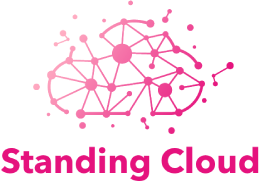Web security is more important than ever in today’s digital world. The SANS CWE Top 25 is a key tool for understanding and improving web security. This list highlights the most dangerous software weaknesses that can affect web applications. By understanding these vulnerabilities, businesses and developers can protect their systems and data.
At the heart of the SANS CWE Top 25 is the concept of Common Weakness Enumeration (CWE). CWE is a community-developed list of software and hardware weaknesses. It helps organizations identify and categorize vulnerabilities in their systems. By doing so, they can prioritize which issues to address first. Understanding web application vulnerabilities is crucial because these weaknesses can lead to security breaches, data loss, and other significant impacts.
- Understanding CWE Common Weakness Enumeration
- Exploring Common Weakness Enumeration Top 25
- Comparing CWE Top 25 and OWASP Top 10 Vulnerabilities
- Importance of Web Application Security Testing
- Addressing Web Application Vulnerabilities
- Utilizing Cyber Security Glossary
- Taking Action to Enhance Web Security
Understanding CWE Common Weakness Enumeration
The CWE Common Weakness Enumeration is a vital resource in the field of cybersecurity. It provides a detailed framework for identifying and categorizing software weaknesses. This framework is used by developers, security experts, and organizations worldwide to improve their security posture.
- Identification: CWE helps in identifying potential weaknesses in software and hardware that could be exploited by attackers.
- Classification: It categorizes these weaknesses in a structured manner, making it easier to understand and address them.
- Prioritization: By using CWE, organizations can prioritize which vulnerabilities to fix based on their potential impact.
The CWE Top 25 Most Dangerous Software Weaknesses list, available on the CWE official website, provides historical context and shows how these vulnerabilities have evolved over time. This list is a critical tool for anyone involved in web security, as it highlights the most impactful weaknesses that can compromise web applications.
Exploring Common Weakness Enumeration Top 25
The criteria for compiling the Common Weakness Enumeration Top 25 focus on:
- Prevalence: How common the weakness is in the real world.
- Severity: The potential impact of the weakness is exploited.
- Detectability: How easily the weakness can be identified and fixed.
Some of the most critical weaknesses listed in the CWE Top 25 include:
- Improper Restriction of Operations within the Bounds of a Memory Buffer
- Improper Neutralization of Input During Web Page Generation (‘Cross-site Scripting’)
- Improper Authentication
These weaknesses can have a significant impact on web application security, potentially leading to unauthorized access, data breaches, and other security incidents.
Comparing CWE Top 25 and OWASP Top 10 Vulnerabilities
The OWASP Top 10 vulnerabilities is another essential resource for understanding web application security risks. It focuses on the most critical security risks to web applications and is widely recognized in the industry.
While both the CWE Top 25 and OWASP Top 10 lists aim to improve security, they have different focuses:
- CWE Top 25: Concentrates on specific software weaknesses that could lead to security issues across various applications.
- OWASP Top 10: Highlights the most critical security risks specifically related to web applications.
These lists complement each other by providing a comprehensive view of potential vulnerabilities. While the CWE Top 25 offers a broader perspective on software weaknesses, the OWASP Top 10 narrows down the focus to web-specific threats. Together, they provide a robust framework for enhancing web security by identifying and mitigating risks effectively. For a more detailed glossary and insights into the SANS Top 25, you can visit AppSOC.
Importance of Web Application Security Testing
Web application security testing plays a crucial role in safeguarding your online presence. As web applications become more complex, the risk of vulnerabilities also increases. Identifying these weaknesses early can prevent potential breaches and data loss. Here’s why security testing is indispensable:
- Identify Vulnerabilities: Regular testing helps in spotting vulnerabilities before they can be exploited by attackers, ensuring that personal and financial information remains secure from unauthorized access.
- Compliance: Many industries require compliance with security standards, and testing aids in meeting these regulations.
- Maintain Reputation: A secure application boosts customer trust and maintains your brand’s reputation.
Several methodologies and tools are utilized in security testing, including:
- Static Application Security Testing (SAST): Analyzes source code for vulnerabilities without executing the program.
- Dynamic Application Security Testing (DAST): Tests the application in its running state to identify security issues.
- Interactive Application Security Testing (IAST): Combines elements of both SAST and DAST for comprehensive testing.
- Penetration Testing: Simulates real-world attacks to identify potential entry points for hackers.
For a deeper dive into the importance of web application security testing, you can refer to this article by Checkpoint.
Addressing Web Application Vulnerabilities
Addressing web application vulnerabilities is essential to protect your applications from potential threats. Here are some common vulnerabilities and strategies to mitigate them:
- SQL Injection: Validate and sanitize user inputs to prevent attackers from manipulating database queries.
- Cross-Site Scripting (XSS): Implement proper input validation and output encoding to prevent malicious scripts from being executed.
- Cross-Site Request Forgery (CSRF): Use anti-CSRF tokens to ensure that requests are genuine and not forged.
- Insecure Direct Object References: Implement access controls and validate user permissions to prevent unauthorized access to data.
Regular security assessments are crucial for maintaining the security of your web applications. These assessments help in:
- Updating Security Measures: Keep security protocols up-to-date to counteract evolving threats.
- Identifying New Vulnerabilities: As applications evolve, new vulnerabilities may emerge, requiring constant vigilance.
- Ensuring Business Continuity: By addressing vulnerabilities, you can avoid disruptions caused by security incidents.
By proactively addressing these vulnerabilities, you can significantly enhance the security of your web applications and protect your business from potential threats.
Utilizing Cyber Security Glossary
In the world of web security, understanding the technical terms can be daunting. This is where a cyber security glossary comes into play. It serves as a handy tool to decode complex jargon, making it easier for everyone, from beginners to experts, to grasp the nuances of web security.
Here’s how a cyber security glossary can be beneficial:
- Clarification: It helps break down complex terms into simple language.
- Learning: By understanding terms, users can better comprehend web security concepts.
- Communication: It aids in effective communication among professionals by ensuring everyone speaks the same language.
For a comprehensive glossary of cybersecurity terms, visit the CSRC Glossary. This resource is invaluable for anyone looking to deepen their understanding of web security.
Taking Action to Enhance Web Security
Understanding and addressing the SANS CWE Top 25 is crucial for maintaining robust web security. This list provides a clear framework for identifying and mitigating the most dangerous software weaknesses, ensuring your web applications are secure.
Here are some steps to take action:
- Regular Security Testing: Implement regular web application security testing to identify vulnerabilities early.
- Vulnerability Assessments: Conduct thorough assessments to understand the potential impact of vulnerabilities.
- Continuous Learning: Stay updated on the latest trends in web security by engaging in further reading and training.
By taking these steps, you can significantly enhance the security of your web applications. Remember, the key to strong web security is continuous vigilance and proactive measures. To learn more about cybersecurity, visit this insightful article by Standing Cloud.



